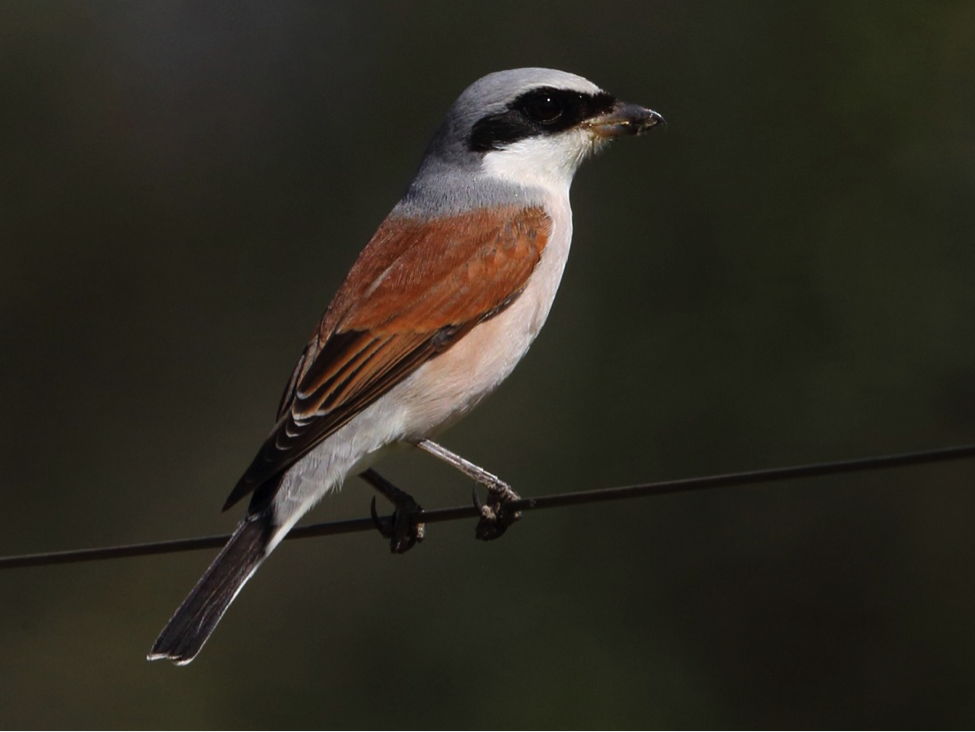Introduction
Shrikes, belonging to the family Laniidae, are small to medium-sized passerine birds found across Europe, Asia, Africa, and North America.Often referred to as "butcher birds," they are known for their distinctive behavior of impaling prey on thorns or barbed wire, creating larders for later consumption.This article provides an in-depth look into the various aspects of shrikes, including their taxonomy, physical characteristics, behavior, diet, reproduction, and conservation status.
Taxonomy and Distribution
The family Laniidaecomprises 34 species across four genera.The genus Lanius, introduced by Carl Linnaeus in 1758, includes the majority of shrike species.Shrikes are predominantly found in open habitats such as grasslands, savannas, and agricultural areas.Their distribution spans continents, with species adapted to various climates and ecosystems.
Physical Characteristics
Shrikes are characterized by their robust, hooked beaks, which are adapted for grasping and tearing prey.Many species exhibit sexual dimorphism, with males often displaying more vibrant plumage than females.For instance, the male Red-backed Shrike (Lanius collurio) has a distinctive reddish back and a black mask across its eyes.In contrast, females and juveniles typically have more subdued colors, aiding in camouflage.
Behavior and Hunting Techniques
Shrikes employ a "sit-and-wait" hunting strategy, perching on elevated spots like branches, wires, or fence posts to spot prey.Once prey is identified, they swoop down to capture it.Their diet primarily consists of insects, small vertebrates, and occasionally other birds.The impaling behavior serves multiple purposes: creating food caches, marking territory, and displaying fitness to potential mates.This practice is particularly evident in species like the Loggerhead Shrike (Lanius ludovicianus), which impales prey on thorns or barbed wire .
Reproduction and Nesting
Shrikes are typically monogamous during the breeding season.Males establish territories and attract females through vocalizations and displays.Nests are usually constructed in shrubs or trees, where females lay a clutch of eggs.Both parents share the responsibility of incubating the eggs and feeding the chicks.After fledging, young shrikes remain dependent on their parents for a period before becoming fully independent.
Conservation Status
While many shrike species are not currently at risk, some have experienced population declines due to habitat loss, pesticide use, and other environmental pressures.For example, the Red-backed Shrike (Lanius collurio) has seen significant declines in parts of its range, leading to conservation efforts aimed at habitat restoration and protection . Conservation status varies among species, with some classified as of "Least Concern" and others as "Vulnerable" or "Endangered" by the International Union for Conservation of Nature (IUCN).
Notable Shrike Species
- Loggerhead Shrike (Lanius ludovicianus): Found in North America, this species is known for its distinctive black mask and aggressive hunting techniques.
- Red-backed Shrike (Lanius collurio): A migratory bird that breeds in Europe and western Asia and winters in tropical Africa.It is noted for its reddish back and black eye mask.
- Woodchat Shrike (Lanius senator): Common in southern Europe and the Middle East, this species is recognized for its striking black and white plumage and red crown.It feeds on a variety of insects and small vertebrates .
- Tiger Shrike (Lanius tigrinus): Native to parts of Asia, this species has a distinctive tiger-like pattern on its back and is known for its sharp hunting skills .
- Yellow-billed Shrike (Lanius corvinus): A cooperative breeder found in tropical Africa, this species is often seen in groups and feeds on insects and small vertebrates.
Conclusion
Shrikes are fascinating birds that exhibit unique behaviors and occupy important ecological niches.Their hunting techniques, reproductive strategies, and adaptations make them a subject of interest for ornithologists and bird enthusiasts alike.Conservation efforts are essential to ensure the survival of these remarkable birds, particularly those species facing environmental threats.Understanding and protecting shrikes contribute to the broader goal of preserving biodiversity and maintaining healthy ecosystems.
References:
- Shrike. Wikipedia. https://en.wikipedia.org/wiki/Shrike
- Loggerhead Shrike Working Group - Diet & Foraging. https://www.loggerheadshrikes.org/dietLoggerhead Shrike Working Group
- Red-backed Shrike. Wikipedia. https://en.wikipedia.org/wiki/Red-backed_shrike
- Woodchat Shrike Bird Facts. Birdfact. https://birdfact.com/birds/woodchat-shrikeBirdfact
- Tiger Shrike. Wikipedia. [https://en.wikipedia.org/wiki/Tiger_sh
Leave a comment
Your email address will not be published. Required fields are marked *

